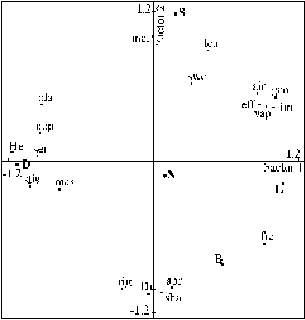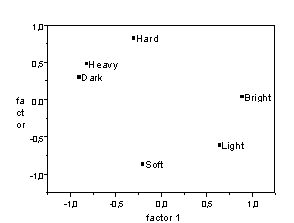| "Human Supervision and Control in Engineering and Music" |
| Workshop | Orchestra Concert | Ensemble Concert | About us |
Giovanni De Poli
with Sergio Canazza
Carlo Drioli
Antonio Roda’
Alvise Vidolin
Patrick Zanon
Analysis and modeling of expressive intentions in music performance
AbstractPerformer can convey different expressive intentions when playing a piece of music. Perceptual and acoustic analysis of expressive music performances tries to understand the musicians’ strategies. Moreover models for rendering different expressive intentions were developed both for analysis purpose and for a deeper multimedia products fruition.
Musical performance and expressive intentionsMusic is an important means of communication where three actors participate: the composer, the performer and the listener. The composer instills into his works his own emotions, feelings, sensations and the performer communicates them to the listeners. The performer uses his own musical experience and culture in order to get from the score a performance that may convey the compositor’s intention.
For the great variety in the performance of a piece, it is difficult
to determine a general system of rules for the execution. An important
step in this direction was made by Sundberg (KTH) and co-workers (http://www.speech.kth.se/
music/performance).
They determined a group of criteria which, once applied to the generic
score, can bring to a musically correct performance [Friberg et al.
1991].
Further on, the performer operates on the microstructure of the musical
piece not only to convey the structure of the text written by the
composer,
but also to communicate his own feeling or expressive intention. Quite
a lot of studies have been carried out in order to understand how much
the performer’s intentions are perceived by the listener, that is to
say
how far they share a common code. Gabrielsson (http://www.psyk.uu.se/hemsidor/alf.
gabrielsson)
in particular, studied the importance of emotions in the musical
message.
An increasing number of studies is concerned with how the musician’s
intentions
affect the performance. In this case the experimental material is
obtained
by asking the performer either to provide different performances of his
own choice and to describe the intentions behind them, or to play with
a certain intention in mind (see [Gabrielsson 1999] for a review).
In this context, we started researches in order to understand the way
an expressive intention can be communicated to the listener and we
realized
a model able to explain how it can be possible to modify the
performance
of a musical piece in such a way that it may convey a certain
expressive
intention. In the following section the main aspects of analysis and
modeling
expressive intentions will be presented with reference to our results.
Analysis of expressive intentionsIn fig. 1 is summarized the analysis-by-synthesis methodology.

Fig. 1: Analysis-by-synthesis methodology.
Perceptual analysisAim of the perceptual analysis is to see whether the performer’s intentions are grasped by the listeners and to determine the judgment categories used by the listeners.

Fig. 2: Factor analysis on adjectives. Evaluation adjectives: black,
oppressive, serious, dismal, massive, rigid, mellow, tender, sweet,
limpid,
airy, gentle, effervescent, vaporous, fresh, abrupt, sharp.
Performances:
Neutral, Light, Bright, Hard, Dark, Heavy, Soft. It can be noticed a
good
recognition of the performers intentions by the subjects.
The second factor analysis used performances as variables (e.g. see fig. 3). It showed that the subjects had placed the performances along only two axes. The two dimensional space (Perceptual Parametric Space, PPS) so obtained represents how subjects arranged the pieces in their own minds. The first factor (expressive intention bright vs. expressive intention dark) seem to be closely correlated to the acoustic parameters which regard the kinetics of the music (for instance Tempo). The second factor (expressive intention soft vs. expressive intention hard) is connected to the parameters which concern the energy of the sound (intensity, attack time). Other acoustic parameters (e. g. legato, brightness) are related to the PPS axes and were deduced from acoustic analyses [Canazza et al. 1998].

Fig 3: factor analysis using performance as variables. First factor
is correlated with kinetics of music; second factor is correlated with
energy of the sound.
Acoustic analysisAcoustic analysis aims to identify which physical parameters, and how many of them, are subject to modifications when the expressive intention of the performer is varied.
| Hard | Soft | Heavy | Light | Bright | Dark | |
| Tempo | + | - - | + + | + + + | ||
| Legato | + | + | - | -- | ||
| Attack Duration | - | + | + | - - | - | |
| Dynamic | + | - | - | + | ||
| Up-beat / Down-beat | - | + | ||||
| Envelope Centroid | beginning | center | beginning | center | ||
| Brightness | + + | - - | + | - | + + | - - |
| Vibrato | + + | + | + + |
Tab. 1: relation among expressive intentions and acoustic parameters
variation in relation to a neutral performance in Violin Sonata Op. V
by
Arcangelo Corelli.
Modeling expressive intentionsAccording the analysis-by-synthesis method, using results of the analysis and expert’s experience, some models for producing performances with different expressive intentions has been developed. Combinations of KTH performance rules and of their parameters were used for synthesizing interpretations that differ in emotional quality (http://www.speech.kth.se/music/performance/
ReferencesCanazza S., De Poli G., Di Sanzo G., Vidolin A. (1998). “A model to add expressiveness to automatic musical performance”. In Proc. of 1998 International Computer Music Conference. Ann Arbour. Pp. 163-169.
Canazza S. De Poli G., Drioli C., Rodà A., Vidolin A. (2000). “Audio morphing different expressive intentions for Multimedia Systems”. IEEE Multimedia, July-September, 7(3), pp. 79-83.
De Poli G., Roda’ A. and Vidolin A. (1998). “Note by note analysis of the influence of expressive intentions and musical structure in violin performance”. Journal of New Music Research, 27(3), pp . 293-321.
Friberg, A., Frydén, L., Bodin, L.-G., and Sundberg, J. (1991) Performance Rules for Computer-Controlled Contemporary Keyboard Music, Computer Music Journal, 15-2, pp. 49-55.
Gabrielsson, A. (1999). The performance of music. In D. Deutsch (Ed.), The psychology of music (2nd ed., pp. 501-602). San Diego: Academic Press.